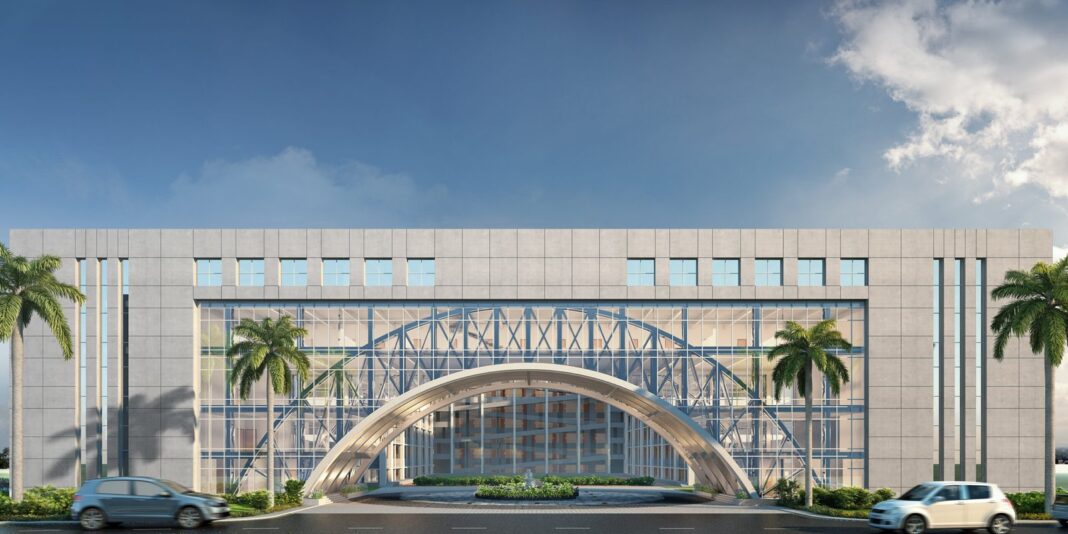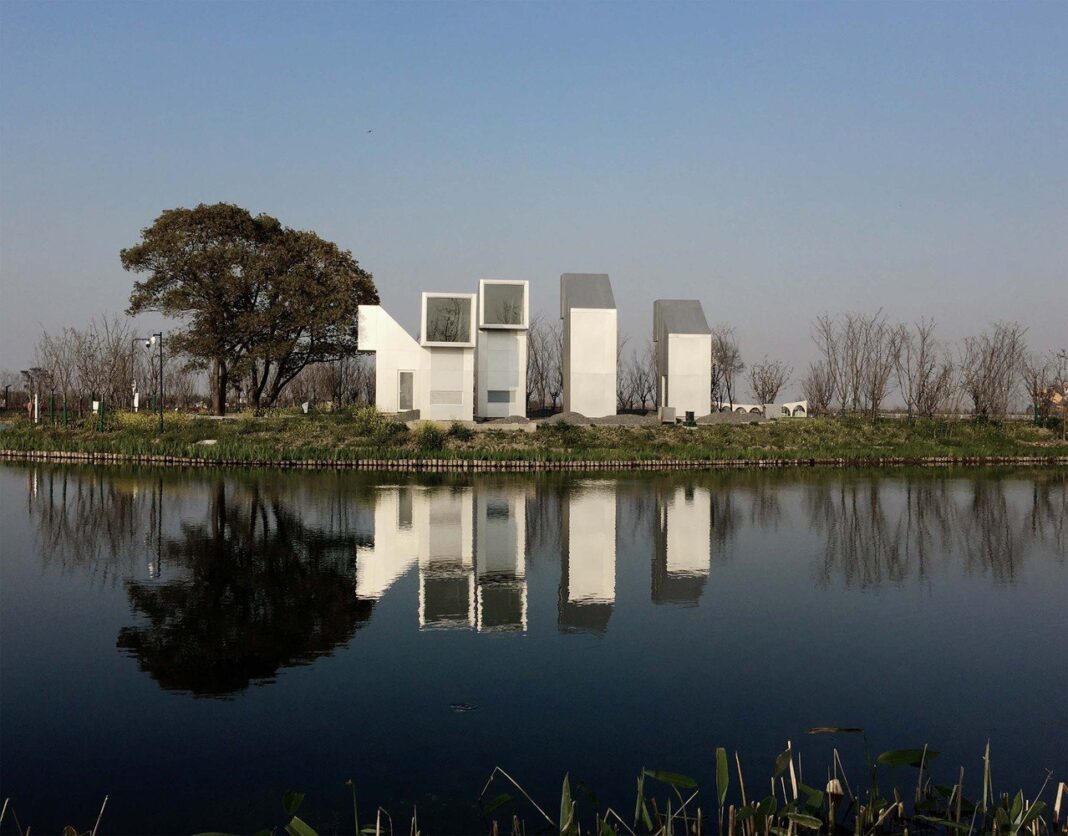Sanaka Education Trusts Group of Institutions, abbreviated as SETGOI is a private engineering institution belonging to Shri Ramakrishna Institute of Medical Sciences and Sanaka Hospitals (SRIMS & SH). The institution is set in over a 60-acre of campus in the fringes of the industrial city of Durgapur in eastern region of West Bengal.
Brief
The brief that came from the client was to incorporate a modern themed expression through careful treatment of existing blocks and addition of new ones. It was a concept that was a challenge to incorporate into the existing structure.
The proposed block was to act as the first point of visibility to the university that stood beyond it which already comprised of multiple blocks. The pre-existing buildings needed a ‘facelift’ in common theme in order to entwine the overall thematic landscape and hardscape integrating and relocating the existing saal wood forests.
Purpose
The purpose of the new structure and space was not only to be the outer shell for functions but also, through its form, allow a three-dimensional cross reference of the wide mix of the culture of the Indian society, which by extension is a society of concurrent systems represented by students of different origin and other social variants.
The main role as an architect was to ensure that the layout and scheme of the new structures were in sync with the philosophy of Sanaka University so that a coherent transition between the already built and yet to build concepts is created. Simultaneously, there was also the need to use signature elements to create an iconic structure while being contextual in function.
Design Specifics
Keeping in sync with the natural character of the region, integrated landscape played a pivotal role in the design scheme. The proposed structure was to house the admin offices and associated spaces in floors above and around the central entrance void. The intent was to create a multifunctional wide arch, symbolizing the engineering bending moment curve as well as act as a large entrance archway and an appealing frame for the viewers watching from the inside of the university through it.
Keeping in mind these design details, the architecture of the new space emerged as a mix of geometry redefined- as complex as our societal system yet as restrained as the students at the university were expected to exult.
Knowledge can hardly be split into clearly defined fields & shapes. Innovations developed with inter spaces, with indistinctness, within the overlapping and hybridizing was what needed to come through the design. Thus, a fusion and mutation of different entities constituted dynamic spaces of the new space.
A similar concept can be found in concrete used in the Sevoke Coronation Bridge near Siliguri, West Bengal- an inspiration from which has been considered here to achieve the effect.
Use Of Steel
Steel allowed flexibility in designing the huge volume of the void which effectively covers the 45m wide, 12 m high, the primary entrance and exit with landscape and plazas extending through this opening. The scale of the structure allowed itself to act as a buffer respecting privacy beyond itself while instilling enough intrigue in outsiders to come and explore. Even with its humongous built volume, an efficient around 8 kgs per square feet of steel has been used to build the structure.
660 tons of steel has been used not just as reinforcement and support here but also as a finishing material itself. Glazing has been used on the entire steel façade in order to enable complete visibility to all steel members. Night illumination enhances the primary truss and other primary members to lend an iconic look for those viewing the building from a distance. While structures with steel as support are well known, its use as a finishing material poses an interesting aspect as it rarely has been used other than in industrial structures.
The MS arch has been designed as the main support structure – 1 floor deep and cross-braced for rigidity and stability, over which the secondary MS structure rests. The arch thus transfers the load from floors above, over, and around to its foundation thereby allowing the creation of the 45m wide and 12m high voids allowing selective view of the intriguing courtyard and features inside.
The resulting structure was grand with visible steel members arranged to provide the recommended support while appearing as a patterned sharp glass and steel monolith symbolizing strength and stability. The glazing allowed both-way viewing while rough stone cladding lent a heavy, stable character to the structure. The administrative offices and other facilities have visibility into the void through the curvilinear surfaces facing inwards as well as at the ground level are security room and entrance lobby & info services for the offices above. The software used for designing and planning are Staad, Sketchup, Zwcad and E-Tabs.
“Our idea was to create architecture with fantasy- as buoyant and variable as human emotions, as this institute is and will be the seed of learning of student shaping future. Hence our spaces are pulsating, our heartbeats become spaces and our expressions the façade. It is not that we should change in order to live within restrained spaces. Spaces have to react to our movements, feelings, moods, and emotions so that we can all relate to it. The space designed is primarily a three-dimensional expression of our society. We cannot allow space to bow down to alleged factual restraints; space should be unique & conscious to the need of individuals.”
Anirban Bhaduri, Architect & Founding Partner, Innate


Fact File:
Architect &Consultant: Innate & Perfect Consultant
Steel Fabricator: Raj Enterprise
Steel Supplier & PMC: PTCPL-LIPL Consortium
Status: Ongoing







